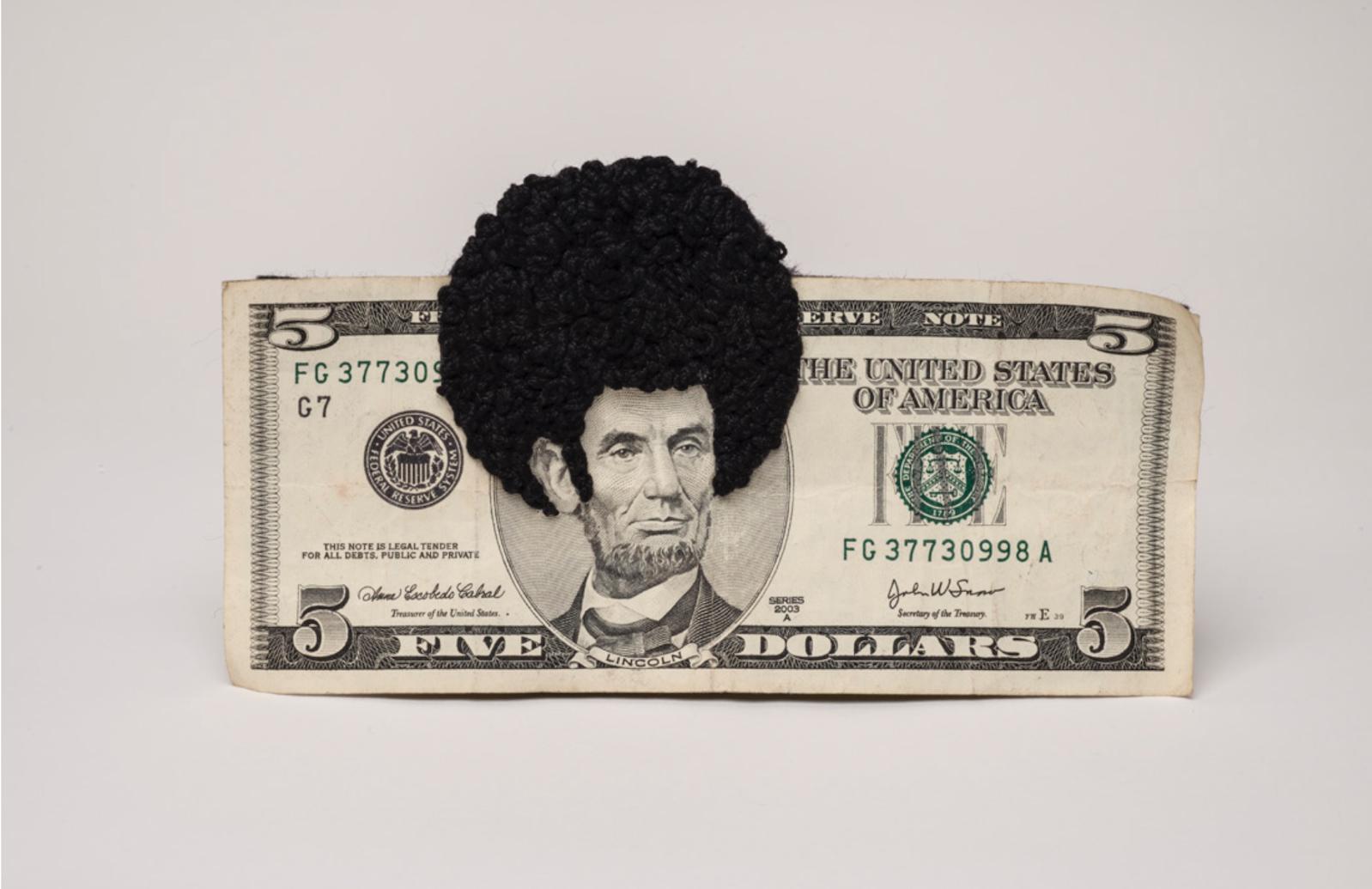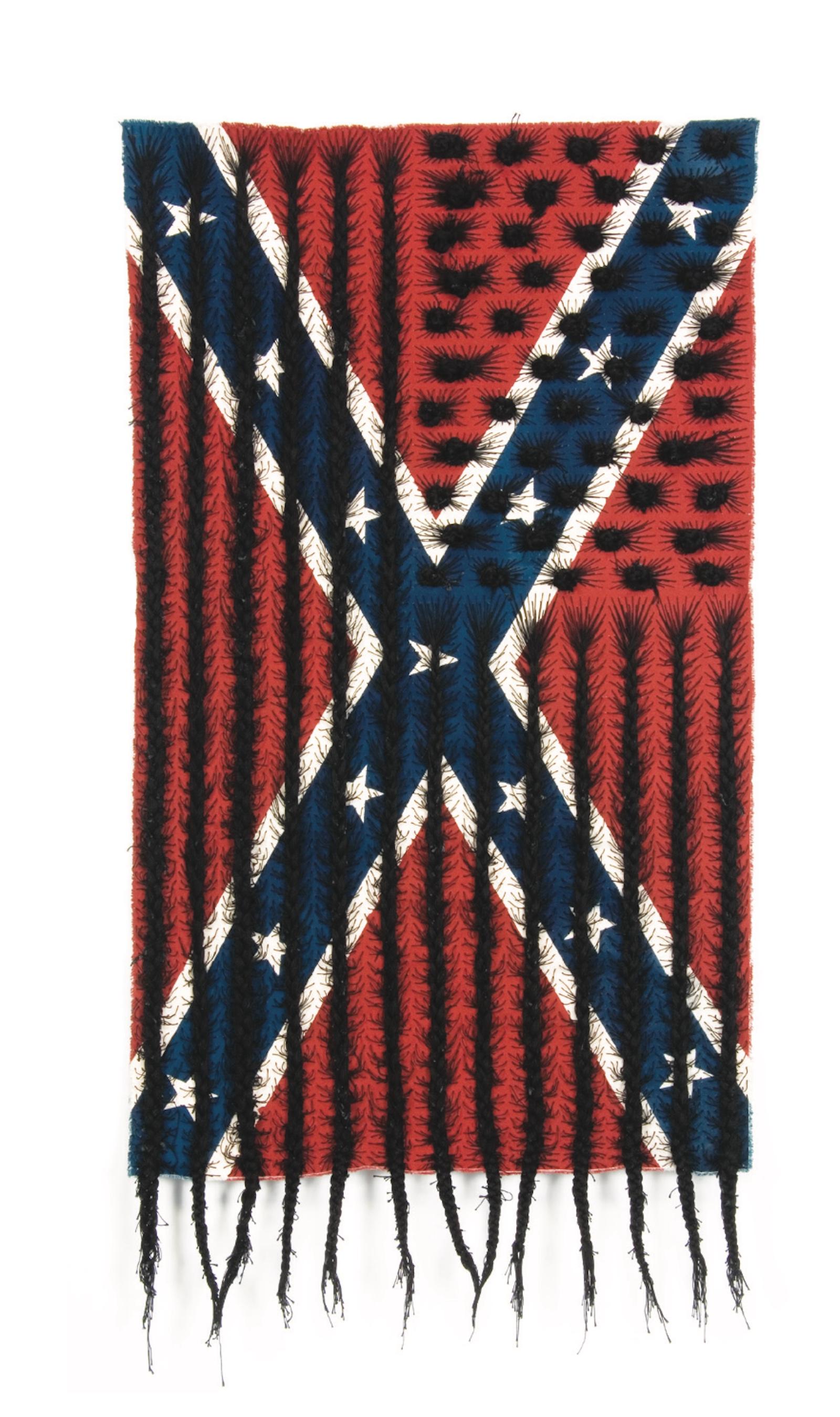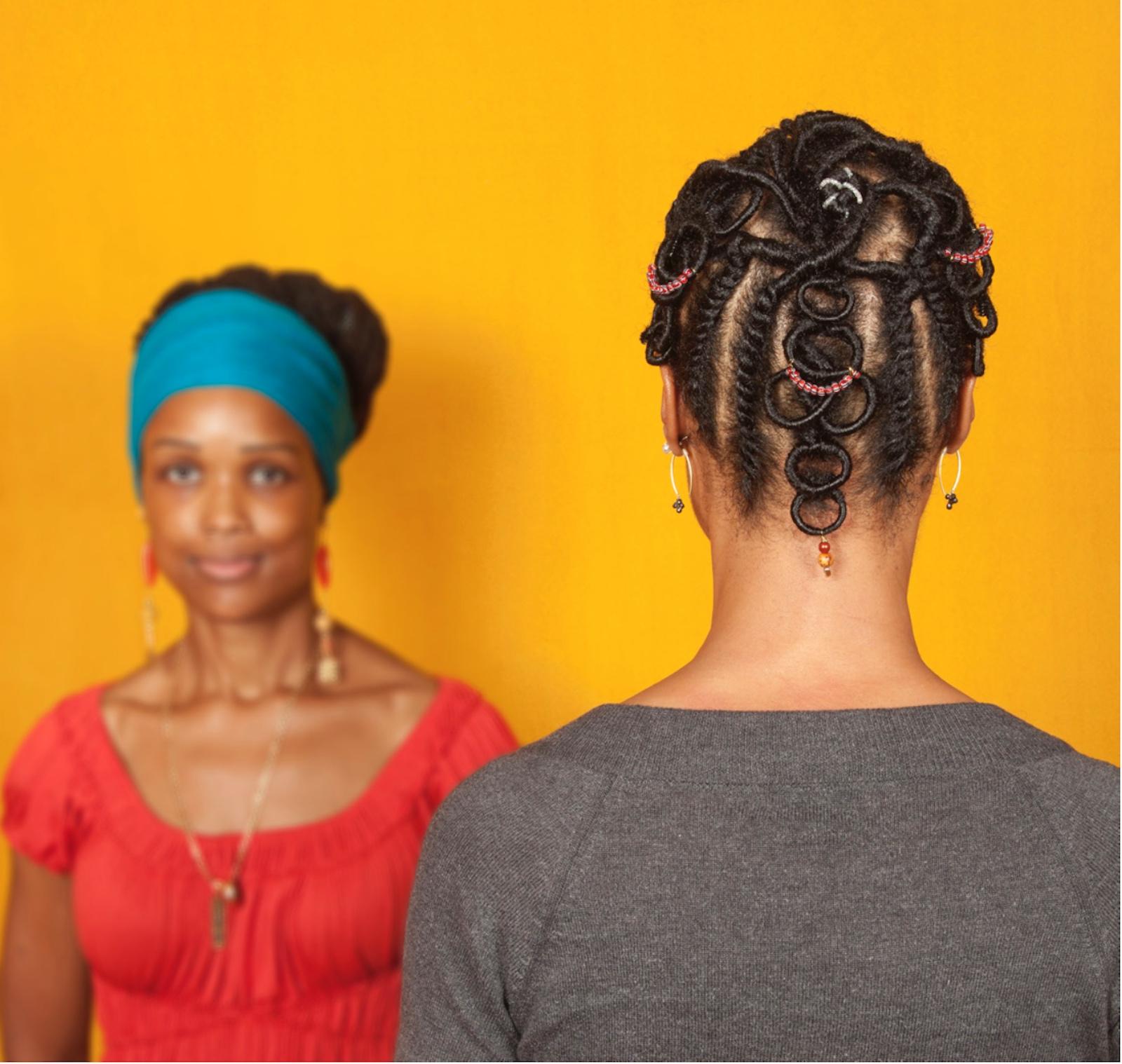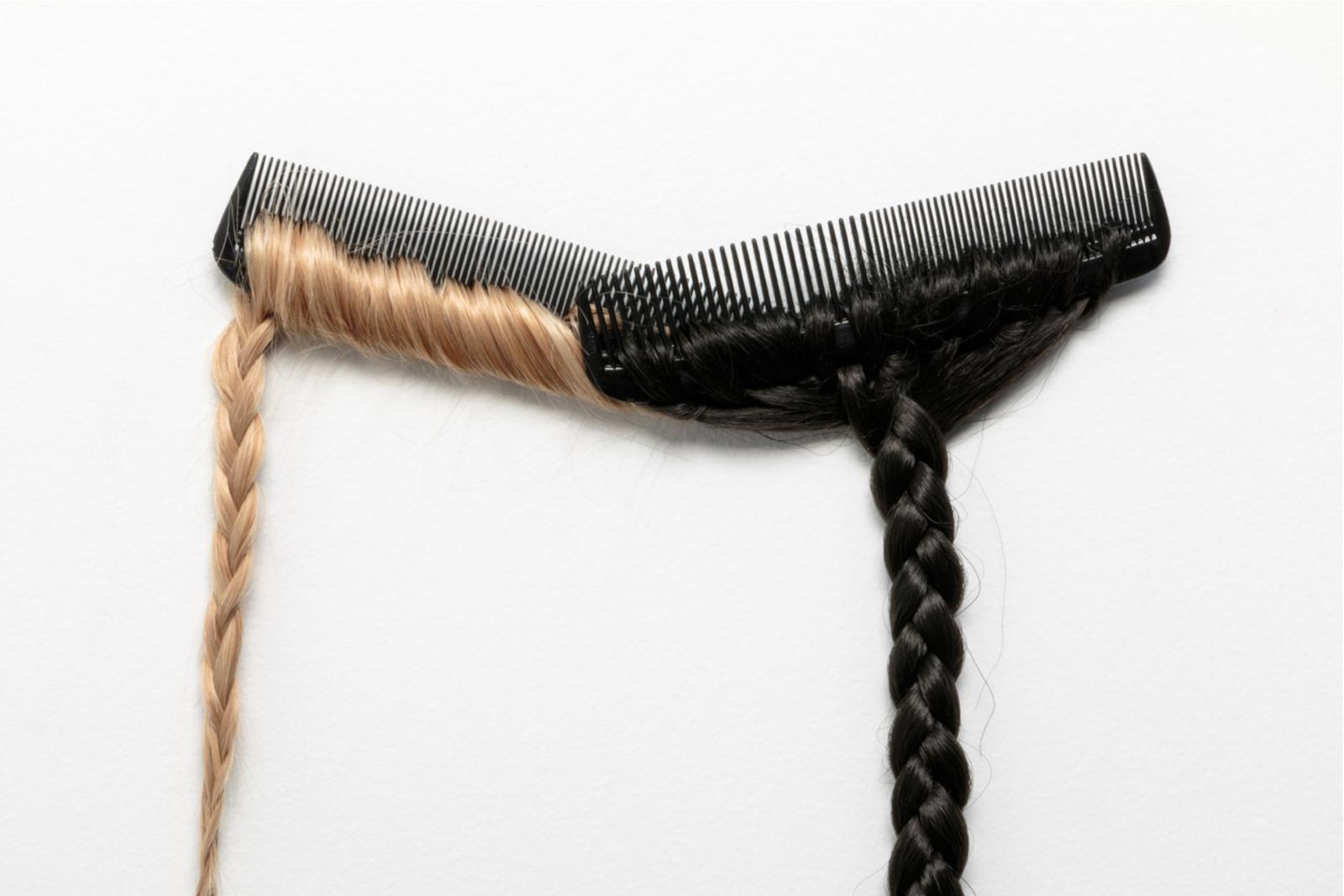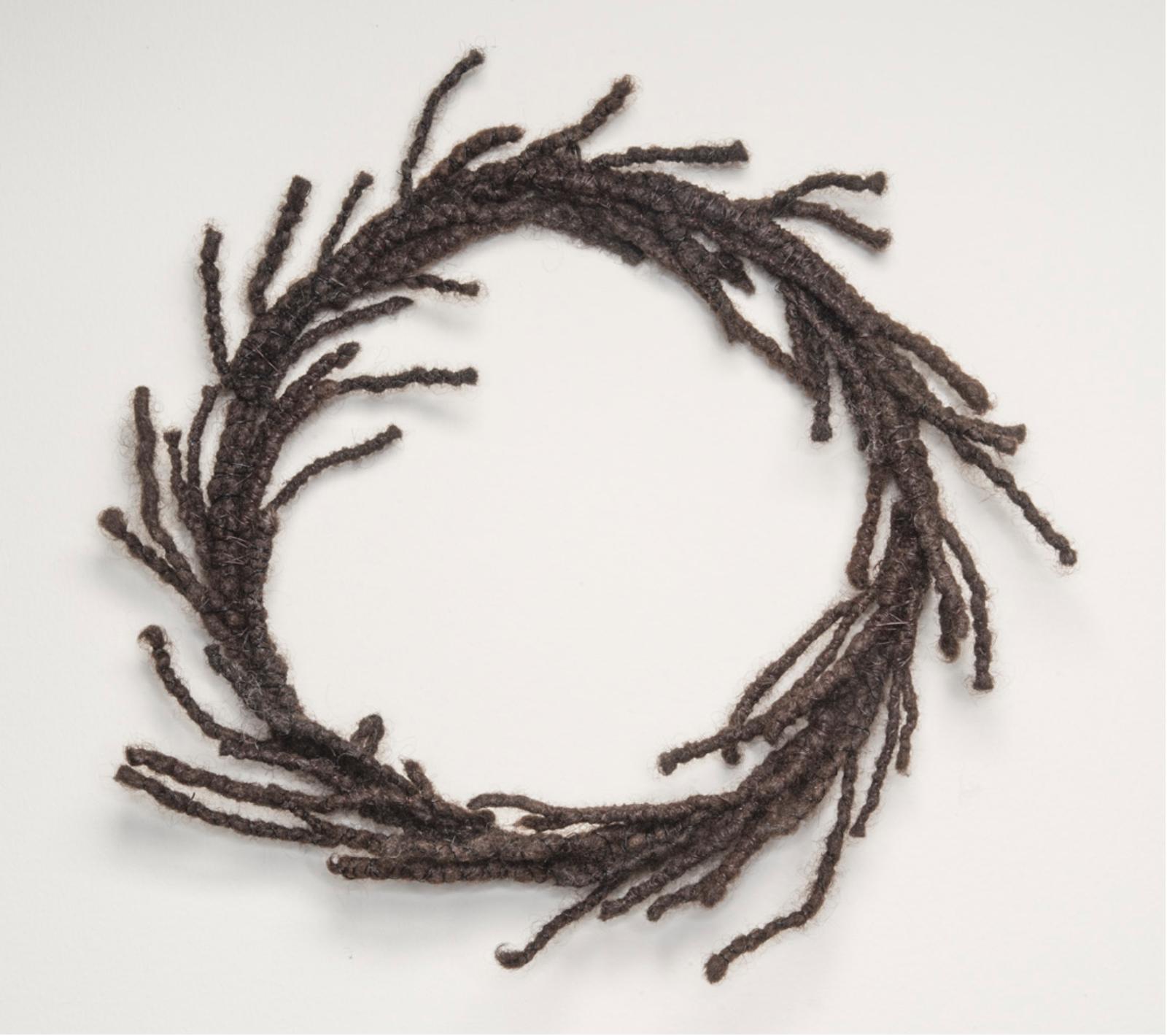“This timely exhibition affirms Clark’s prowess as both maker and visionary,” said NMWA Deputy Director for Art, Programs and Public Engagement/Chief Curator Kathryn Wat. “She uses concept, process and participation rather than didactic imagery to reflect questions and truths back to us.”
Clark describes “mining” common objects, particularly those bound to identity and power, because “they have the mysterious ability to reflect or absorb us.” The artist transmutes these objects through the application of a vast range of fiber-based processes: weaving, folding, braiding, trimming, pulling, rubbing, twisting, pressing, snipping, dyeing, tying or stacking her diverse source materials.
By stitching black thread cornrows and Bantu knots onto flags, rolling human hair into necklaces, or stringing a violin bow with a dreadlock, she reasserts the Black presence in histories from which it has been pointedly omitted.
For example, Clark’s Afro Abe II (2010)—a five-dollar bill embellished with black threads that form an Afro for President Abraham Lincoln—is witty, poignant and provocative. The stitched intervention induces a sharp, penetrating moment of recognition and connection and infuses the currency with new, layered meaning. Clark’s use of currency-as-canvas evokes personal, cultural and historical associations with money, including freedom, self-determination and property ownership. As Clark observes, “It’s crowning the emancipator with the hair most associated with Black liberation and black power,” simultaneously embodying the historical absence of Black political agency as well as the promise of it. That liminality—the creation of objects that simultaneously denote humankind’s capacity to suppress as well as persevere—is the formidable essence of Clark’s practice.
Drawing on the rich complexity of her heritage, with a Jamaican mother, Trinidadian father, and Scottish great-grandfather, Clark has a unique vantage point on American identity and craft. Her interest in textiles extends in part from her maternal grandmother (a tailor) and her own study of textiles in art school. “Textiles have a lot of power,” Clark says. “You might not know how something is woven or knit or the structure, but you know something of cloth, and cloth is surrounding you all the time.”
Because it emanates from the body, hair is sometimes considered taboo as an art-making material. Hair’s connection to the individual body, however, is precisely why Clark embraces it as the most essential textile fiber available to her. A strand of hair possesses a person’s whole DNA sequence, standing in for the physical body as well as an extended genealogy. Clark crafted her Hair Wreath (2002) from gathered and bound stands of dark hair. Whereas a wreath usually adorns the head as a decorative or celebratory ornament, here she illustrates that hair itself is a worthy adornment.




